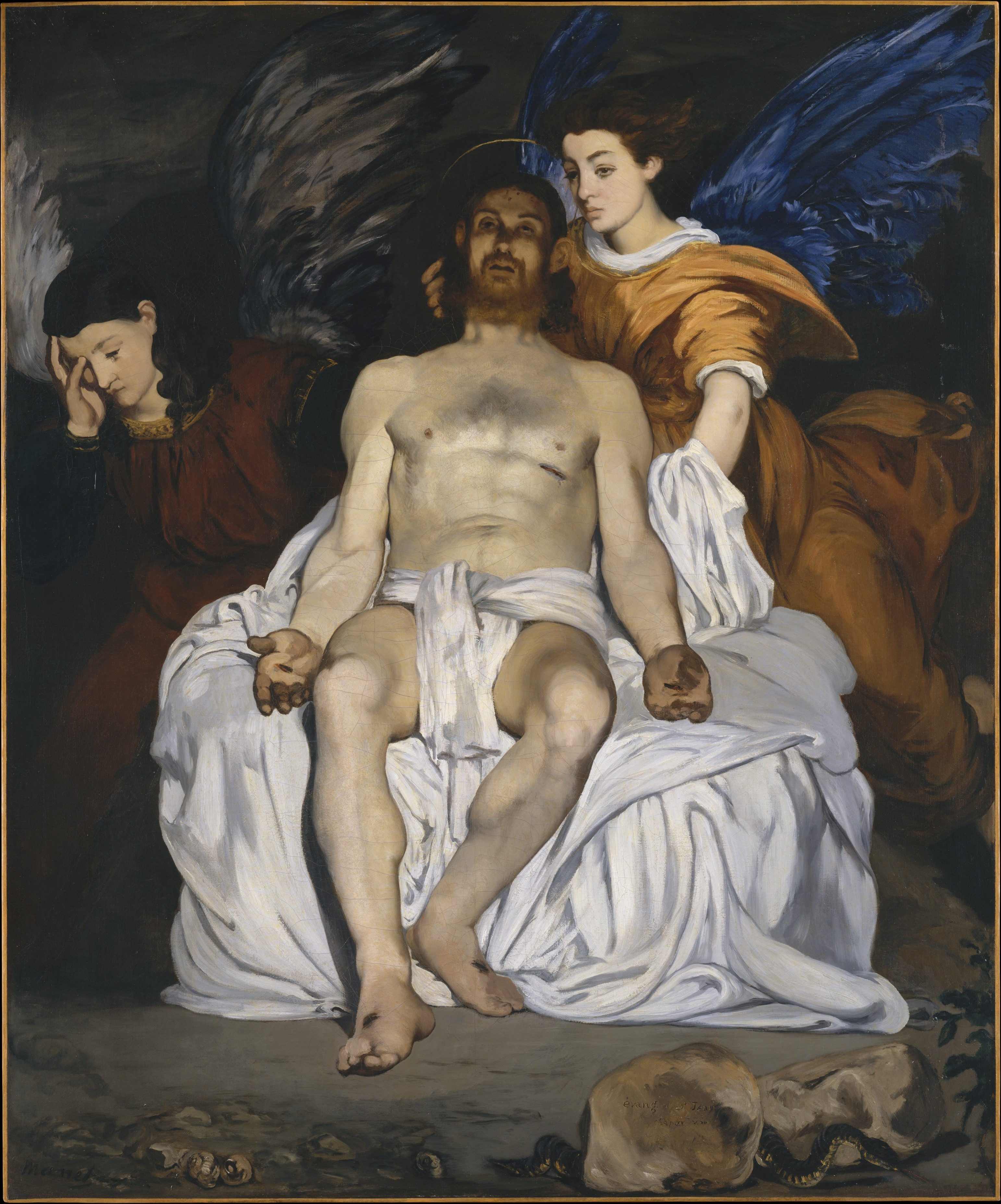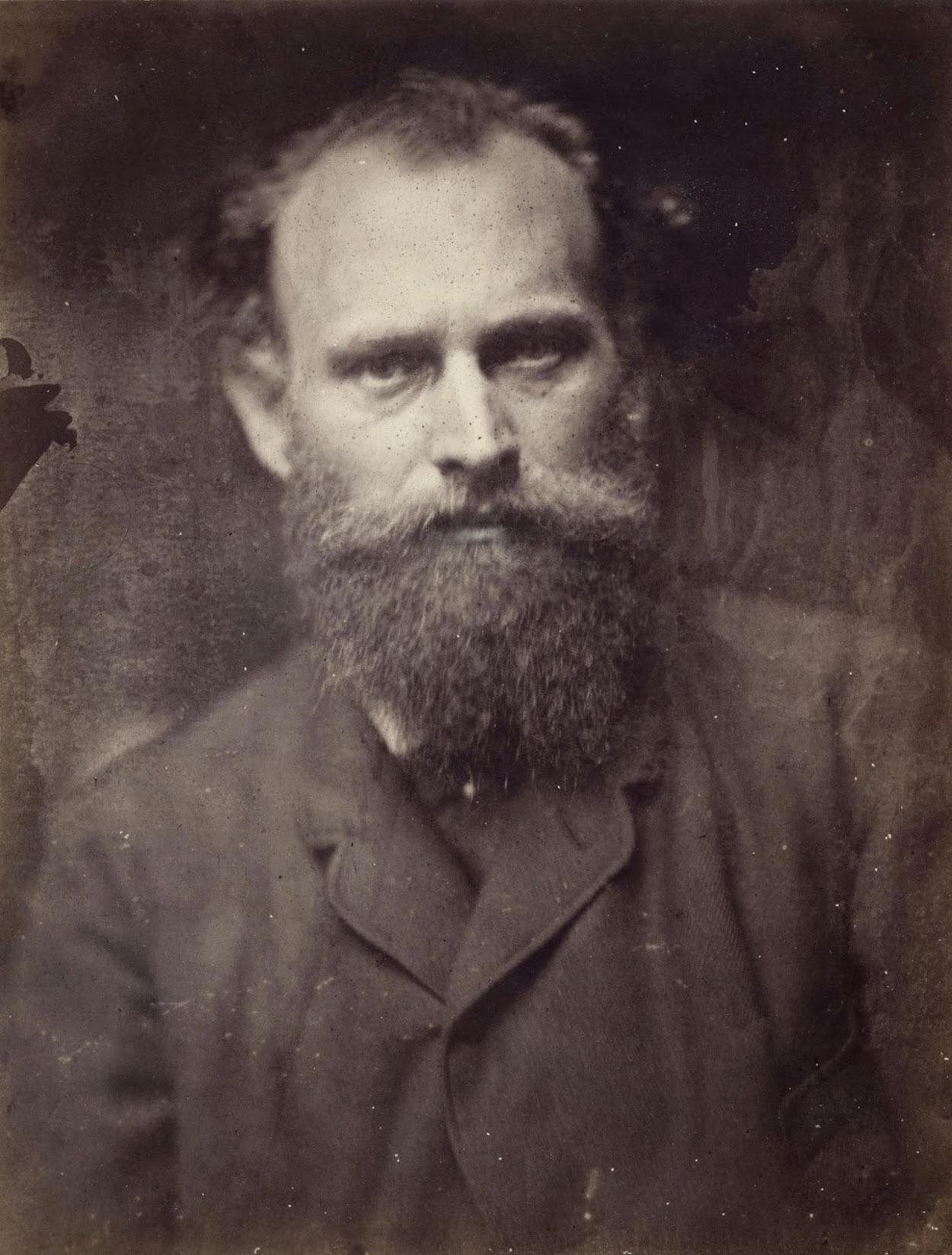When we think of Manet, we don't expect to see something like today's feature. As we love to be unexpected, I've decided to celebrate Edouard Manet's birthday with a religious painting, The Dead Christ with Angels.
Manet one day remarked to Antonin Proust, "There is one thing that I have always wanted to do, and that is to paint a crucifixion. Christ on the cross—what a wonderful symbol! You can go on searching until the end of time, but you will never find anything like it."
Manet identified the source for this painting, the first of several religious scenes, in the inscription on the rock: the Gospel according to Saint John. In the passage cited, however, Christ’s tomb is empty except for two angels. After Manet sent the canvas to the 1864 Salon, he realized that he had made an even greater departure from the text, depicting Christ’s wound on the wrong side. Despite Charles Baudelaire’s warning that he would "give the malicious something to laugh at," the artist did not correct his mistake. Critics indeed denounced the picture, particularly the realism of Christ’s cadaverous body.
But a new champion of Manet, Emile Zola, was particularly attracted by this work, in which he found more death than life. "We are told that this Christ is not a Christ," he wrote in La Revue du XIXe siecle, "and I admit that may be so. As far as I am concerned it is a corpse, painted boldly and vigorously, with the light full on it. I even like the angels in the background—children with great blue wings."
If you like the artist, we encourage you to see the best portraits created by him here.


 Édouard Manet
Édouard Manet